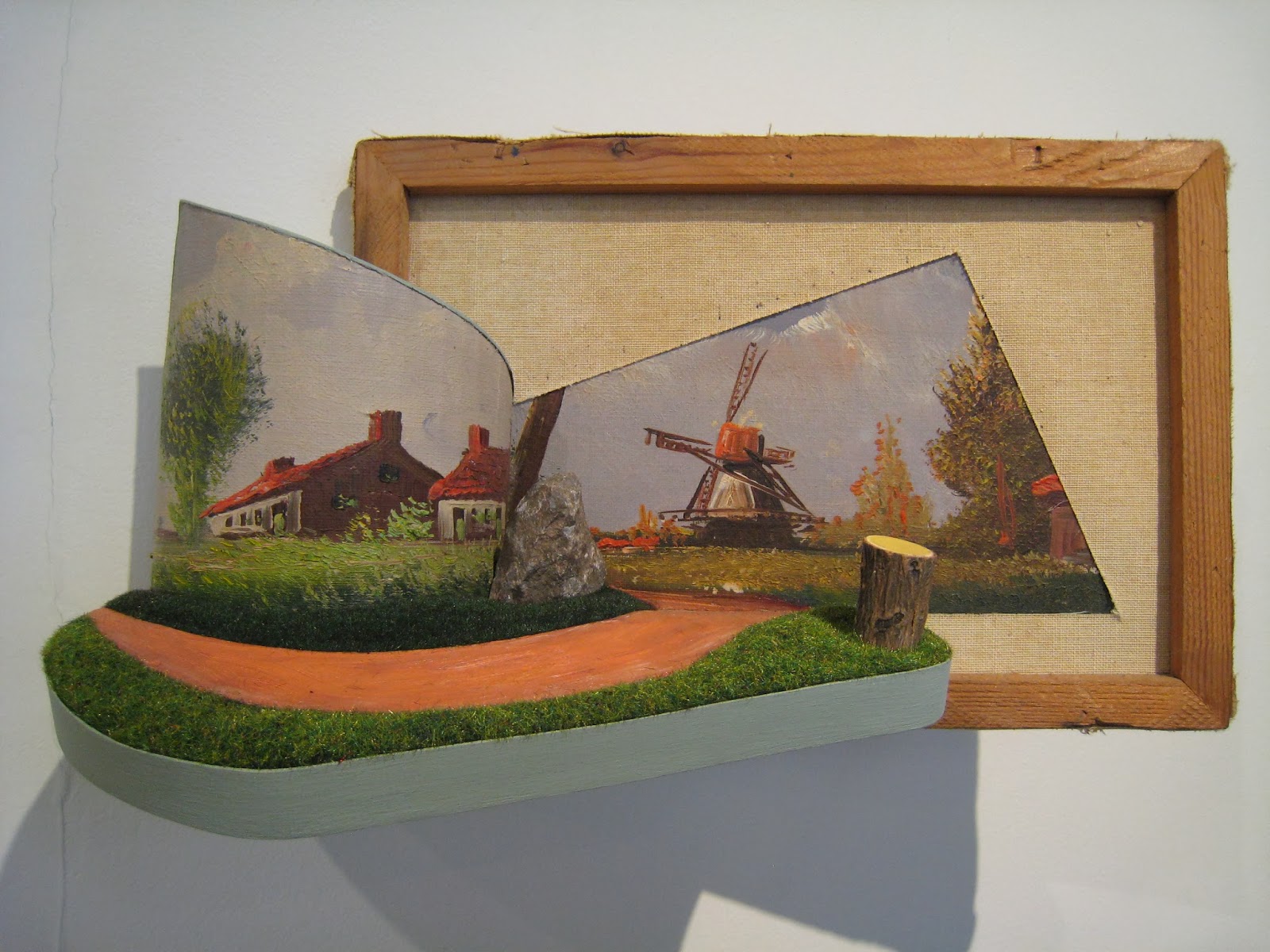Thursday, 19 December 2013
Lace pattern books
Lace pattern books are an endless source of fascination and inspiration. The one shown here is on view at the Calais Lace Museum and shows examples of machine made lace from 1897. I like the serendipity of lace pattern books because you never know what pieces of lace will be juxtaposed. This one shows various net and filling patterns and then four pieces of intricate lace that don’t seem to be related at all. Often you see pages of one design adapted for different uses, such as frills, insertions and edgings but here the patterns seem unrelated. Several of these books are on exhibition at the Museum and there are many more in store.
Friday, 13 December 2013
Setting the scene: New landscapes in craft
This exhibition at the Craft Study Centre includes the work of ten artists who use landscape as their inspiration for the construction and arrangement of craft objects. I much preferred the constructions to the arrangements. Tony Hayward used traditional oil paintings of landscape and manipulated them by appearing to peel back the layers of the painting and thus render them three-dimensional (see ‘The rock and the stump’ in the photo above). Paul Scott referenced the landscape images from 18th century blue ceramic transferware to produce his own blue ceramics of modern agricultural scenes, in which cups became trees and saucers the cultivated land. Mimi Joung used ceramics to transform the emotional landscape of her letters to her mother into a physical sculpture of the lines of writing. While in ‘Grey gardens’ Helen Maurer had produced a diorama from glasses and images of birds. These were placed in a glass box linked to a moving light source which generated different landscapes as it passed across the objects cleverly making the birds appear to fly through the scene. The artists had all responded to the idea of landscape in different ways which produced an interesting exhibition.
Monday, 9 December 2013
The subversive stitch revisited: the politics of cloth
I really enjoyed this conference at the V&A last week. It explored the legacy of Rozsika Parker’s groundbreaking book ‘The subversive stitch’ and began with papers about the history of embroidery and then moved on to the politics of cloth today. As well as the papers it included some film screenings and workshops so it was a full programme. In fact such a full programme that I didn’t see everything because I was busy networking with new friends and old. For me, the highlights of the conference were Griselda Pollock’s paper on femininity, Jenni Sorkin’s interview with Elaine Reichak, Matt Smith’s paper on the Unravelled project and Kimberly Lamm talking about Ghada Amer. Unfortunately, Griselda Pollock couldn’t attend the conference but had sent her presentation instead. She spoke of Rozsika Parker, with whom she had collaborated, and told us about the power of textile and its cultural meaning. Elaine Reichak showed images of her embroideries that juxtapose traditional themes with modern texts and explained how one’s career is shaped by invitations to exhibit rather than a master plan. Matt Smith talked entertainingly about his work on the Messell family for the recent Unravelled exhibition at Nymans house. Many other presenters showed how textiles are being used as political weapons in ethical and social debates and are challenging structures of power using subversive stitching.
Tuesday, 3 December 2013
Lace Effects 1
This exhibition at the Calais Lace Museum is the first part of the Lace Effects exhibition. It runs until May 2014 and will then be followed by Lace Effects 2 which runs from May to December (and will include one of my curtains). The first exhibition includes the work of artists who offer a new perspective on lace inspired by fashion and the second one includes works which question traditional handmade lace techniques. I felt that the link between lace and the work exhibited in this first exhibition was tenuous in some cases but they combined to make an interesting exhibition. My favourite piece in the show was Claire Jackson’s ‘Webbed dress’, which you can see in the image above, which incorporated ‘lace’ made from burnt out viscose satin. It thought it retained the delicacy and beauty of lace using a completely modern technique.
I also liked ‘Perito Moreno’ by Lieve Dekeyser. This was a series of Plexiglas panels digitally printed with photographs of bobbin lace and again it referenced the lightness and transparency of lace and produced beautiful shadows of the images. Brigitte Amarger had also used images of lace, this time on radiographic film, to produce her ‘Dentelles a l’ame’ which formed an impressive installation. Another interesting installation was ‘Lace tracks’ by Hannah White which included a video and images of reflective lace on sportswear, showing lace in a decorative and functional role. This is just a sample of the pieces on show as the exhibition includes the work of 23 artists, so if you want to see it for yourself go to Calais before it ends on 18 May.
Subscribe to:
Comments (Atom)




